Rediscovering Connections to the Land and Each Other
November 21, 2022
“Soil and Spirit” brings together art, science and history to explore humans’ relationship to the ground we occupy
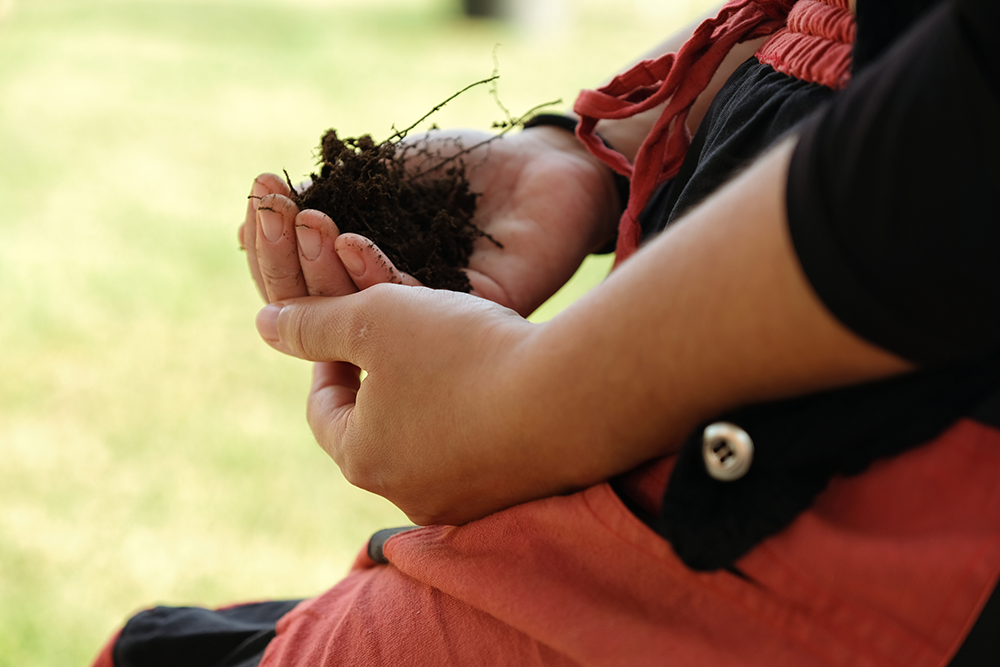
Digging a hole in the backyard to plant a shrub, we might encounter a few insects or worms amid the dirt. But there’s a lot more going on in the soil beneath our feet.
Earlier this year, a study estimated an incomprehensible 20 quadrillion ants living on our planet, up to 20 times higher than previously thought. And during the pandemic, a popular documentary on Netflix opened many eyes to an astounding underground network of fungus that help trees communicate. A tree can respond to a struggling tree’s distress signals by sending carbon and nutrients through the network, revealing cooperation and reciprocity rather than competition.
A Bass Connections team is digging into the richness of dirt and fungi to inform the development of a unique art project called “Soil and Spirit.”
Visiting artist Marina Heron Tsaplina leads the team along with researcher Kevin Caves, who focuses on technologies for people with disabilities, and theater artist Jules Odendahl-James, director of academic engagement and director of Story+.
Last month, the team hosted two events as part of this exploratory process.
At the Duke Campus Farm, a late afternoon gathering brought together members of the Duke and Durham communities to consider the hidden stories buried in our soils.

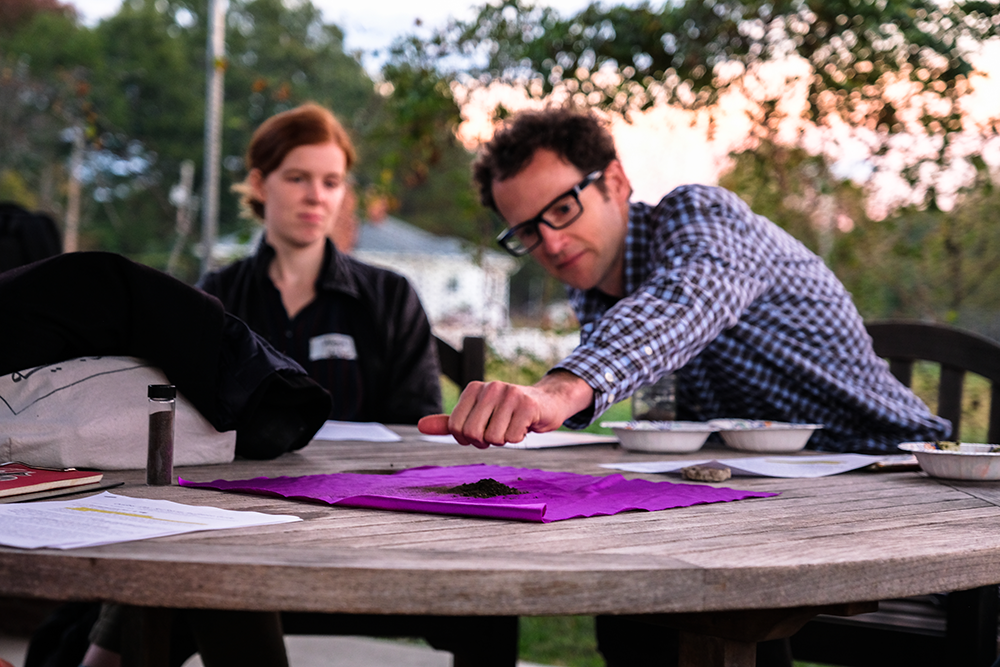
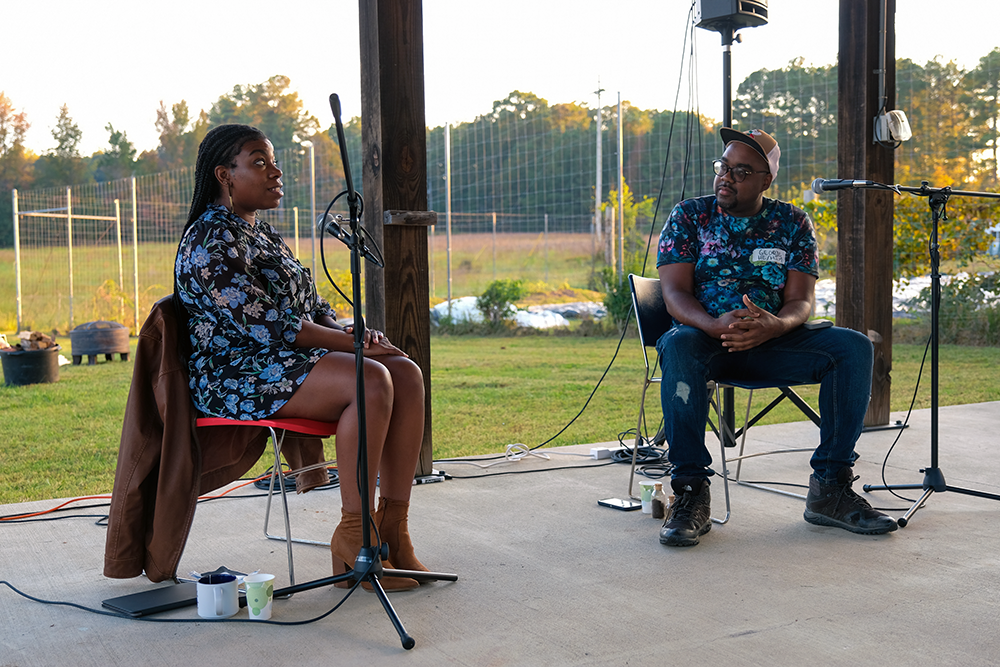
The following day, students gathered in the Fungi Lab of Rytas Vilgalys, professor of biology and a faculty contributor on the Bass Connections team. Molly Haviland led a soil microscopy workshop that built on earlier instruction in which students learned how to identify common soil organisms and understand what they can reveal about soil ecology and health.
Participants looked carefully at the architectures and microbiomes of diverse soils under the microscope, and made notes on any imaginative and memory associations. One student, for example, thought the magnified soil was reminiscent of characters from a children’s TV show.
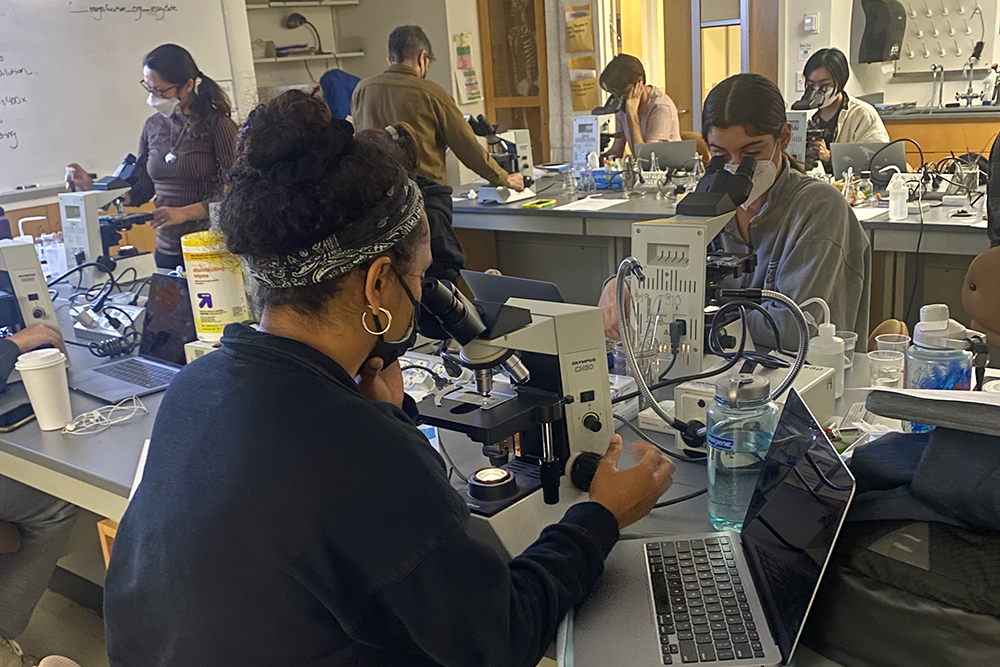
Tsaplina encourages awareness and articulation of personal perceptions throughout the process. “That’s intrinsic to artistic research, in which the illusion that we can be disengaged, objective observers is released,” she said. “You are part of the work. There’s a relationship between you and this material. Our perceptions are shaped by personal, familial, social and historical processes. This is central to the project and our way of working.”
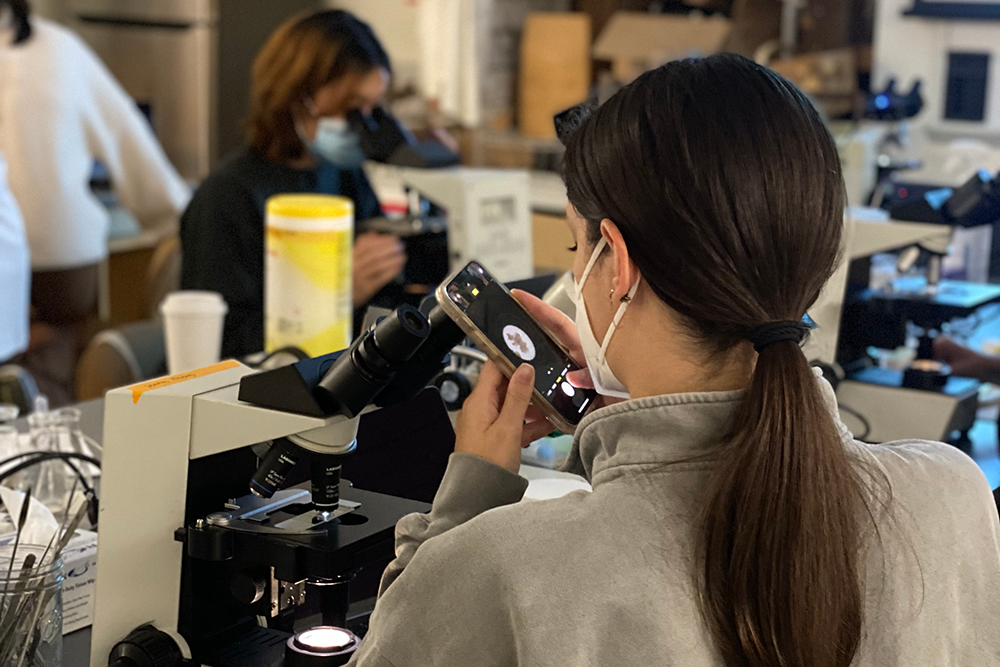
Using their phones, participants collected images of the soil samples under the microscope for the “Soil and Spirit” project’s digital living archive. (Photo: Khilan Walker)
Next semester, the Bass Connections team members will continue developing the digital living archive of the soils and mycorrhizal fungi, and translate this research into the early design, prototyping and choreographing of one to three modular performing objects that will become part of the large-scale kinetic installation in endangered forests. They will also develop a draft of a land art forest policy manual and complete a working prototype of the sensor communication network and mechanical flowers for the installation. The sensor-flowers will play music composed of voices from the disability community, intermixed with sensor data and sounds from the forest.
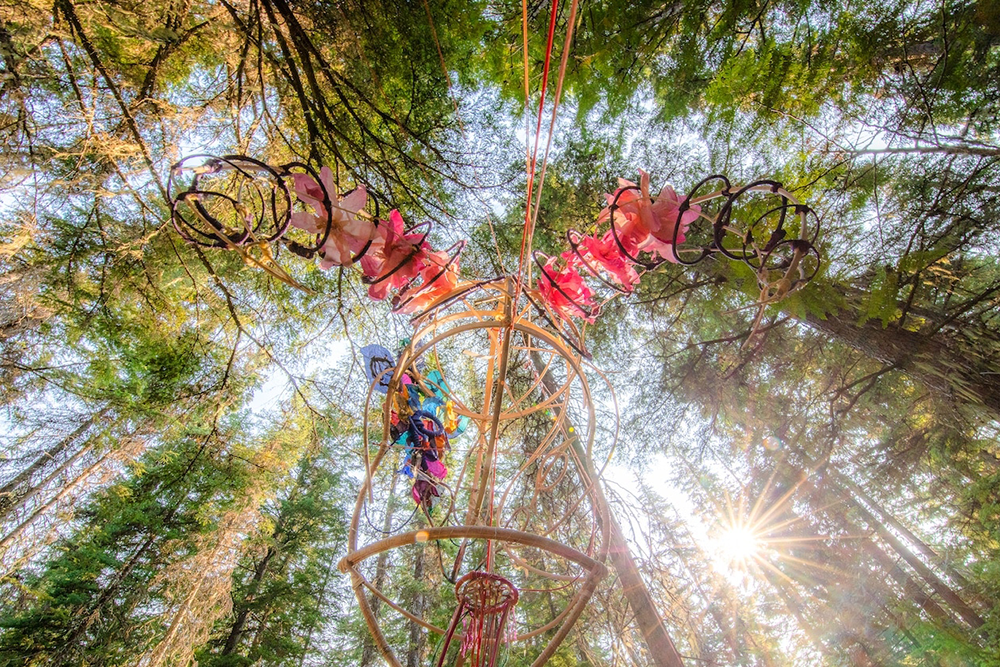
Through “Soil and Spirit,” Tsaplina has invited Duke students into the artistic research and development process of her new work. In a recent interview, she described her approach to the project as “creating a way for people from diverse lineages to learn how to listen to and reconnect with place, to really feel the break that has occurred between our bodies and the land, to hone our attentiveness and embodied perceptions.”
The resulting installation, which will be a participatory 12-hour performance and choreographic assemblage of the kinetic figure, will tour to endangered and/or destroyed forests in the U.S. after a premiere in Chappaqua, New York. This site-specific artwork is designed to engage diverse communities and connect them to unique ecologies and histories of the land.
Learn More
- Read about this Bass Connections project team, Socially Engaged Art and Tech at the Intersections of Ecology, Disability and History.
- Watch a presentation by members of the related Story+ summer project, Art as Relation and Repair Across Disabled Ecologies and Histories.
- Save the date for the Fortin Foundation Bass Connections Showcase on April 19, when this team and others will share their research through posters, interactive displays and lightning talks.
